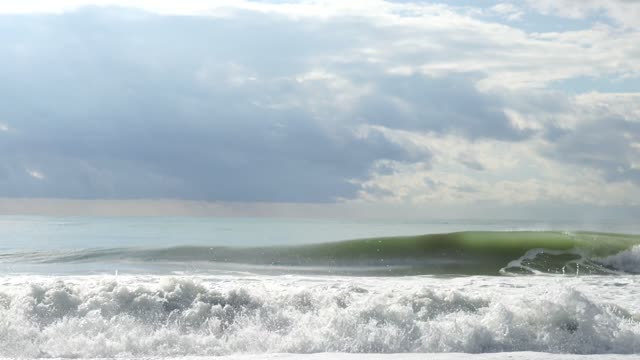Premium Only Content

SEA WAVES
Sea level relates to the vertical change in height of the sea surface, which occurs over all time and space scales. The observed sea level (excluding wind waves) can be regarding as being the combination of tides, nontidal residuals, and mean sea level. Tides are the most predictable and dominant component of sea-level fluctuations in many parts of the world. To fully understand, predict, and categorize them, one must understand both the astronomical forcing that gives rise to them and also the hydrodynamic response of the oceans, to this forcing. The nontidal residual is the part of the sea level that remains once the tidal component has been removed and primarily contains the meteorological contribution to sea level. The most dramatic meteorological sea-level changes occur during storms, when low atmospheric pressure allows sea level to rise and strong winds force water toward the coastline. Mean sea level is the average height of the sea over longer periods of time with the short-term variations associated with tide and storm surges averaged out. The main climate-related factors that are currently causing mean sea levels to rise are: the melting of land-based sources of ice; thermal expansion of seawater; and changes in terrestrial hydrological regimes.
THANKS FOR WATCHING
-
 LIVE
LIVE
Right Side Broadcasting Network
9 days agoLIVE: President Donald J. Trump Keynotes TPUSA’s AmFest 2024 Conference - 12/22/24
20,404 watching -
 4:31
4:31
CoachTY
15 hours ago $10.62 earnedCOINBASE AND DESCI !!!!
45.2K8 -
 10:02
10:02
MichaelBisping
14 hours agoBISPING: "Was FURY ROBBED?!" | Oleksandr Usyk vs Tyson Fury 2 INSTANT REACTION
7.27K7 -
 8:08
8:08
Guns & Gadgets 2nd Amendment News
2 days ago16 States Join Forces To Sue Firearm Manufacturers Out of Business - 1st Target = GLOCK
59.5K59 -
 10:17
10:17
Dermatologist Dr. Dustin Portela
1 day ago $10.07 earnedOlay Cleansing Melts: Dermatologist's Honest Review
69.8K2 -
 1:02:20
1:02:20
Trumpet Daily
2 days ago $28.93 earnedObama’s Fake World Comes Crashing Down - Trumpet Daily | Dec. 20, 2024
45.1K37 -
 6:29
6:29
BIG NEM
22 hours agoCultivating God Mode: Ancient Taoist NoFap Practices
36.9K9 -
 30:53
30:53
Uncommon Sense In Current Times
1 day ago $8.86 earned"Pardon or Peril? How Biden’s Clemency Actions Could Backfire"
56.3K4 -
 40:01
40:01
CarlCrusher
20 hours agoSkinwalker Encounters in the Haunted Canyons of Magic Mesa - ep 4
52.4K2 -
 59:44
59:44
PMG
1 day ago $6.77 earned"BETRAYAL - Johnson's New Spending Bill EXPANDS COVID Plandemic Powers"
58.7K22